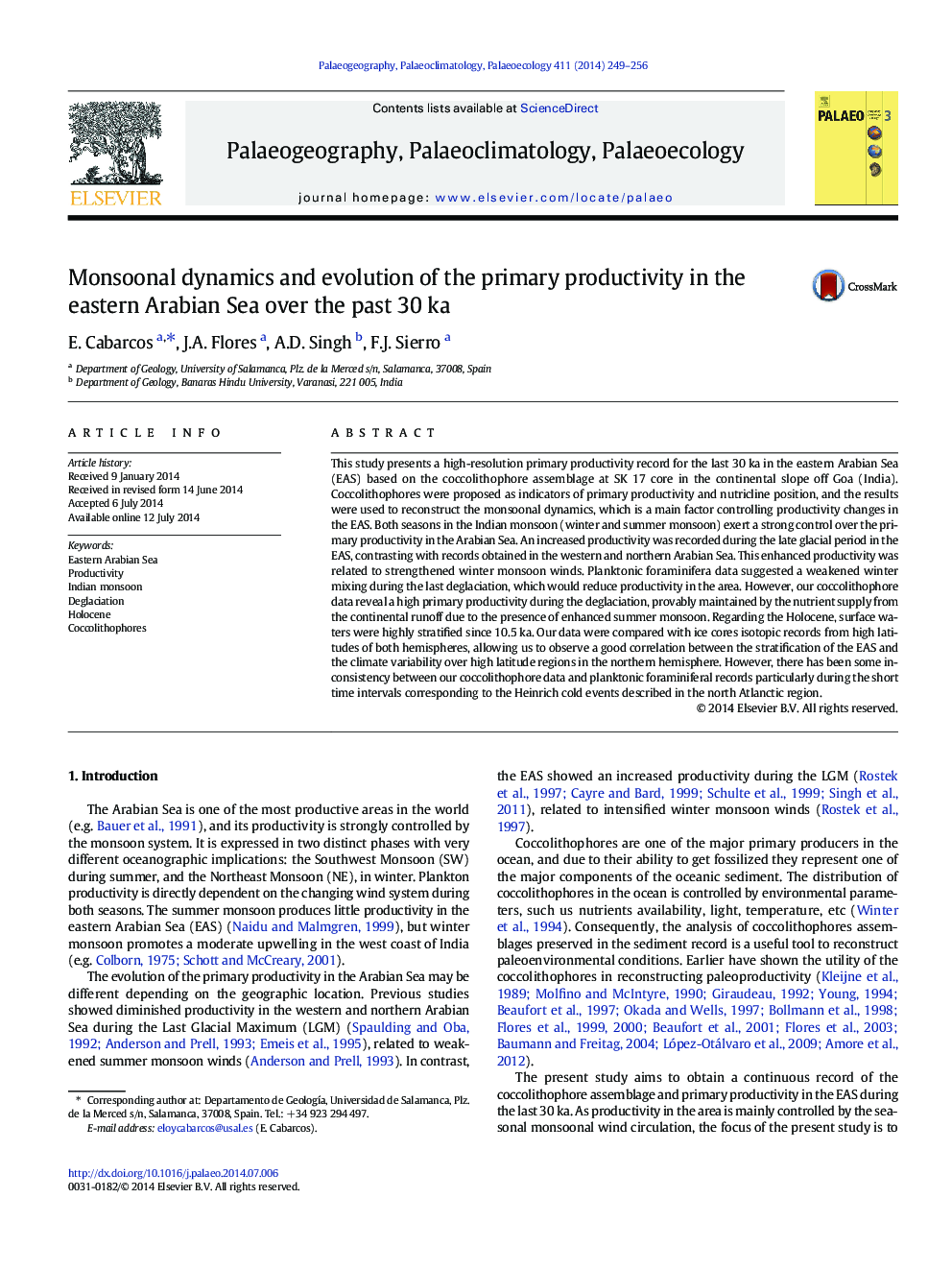| Article ID | Journal | Published Year | Pages | File Type |
|---|---|---|---|---|
| 6350058 | Palaeogeography, Palaeoclimatology, Palaeoecology | 2014 | 8 Pages |
Abstract
This study presents a high-resolution primary productivity record for the last 30Â ka in the eastern Arabian Sea (EAS) based on the coccolithophore assemblage at SK 17 core in the continental slope off Goa (India). Coccolithophores were proposed as indicators of primary productivity and nutricline position, and the results were used to reconstruct the monsoonal dynamics, which is a main factor controlling productivity changes in the EAS. Both seasons in the Indian monsoon (winter and summer monsoon) exert a strong control over the primary productivity in the Arabian Sea. An increased productivity was recorded during the late glacial period in the EAS, contrasting with records obtained in the western and northern Arabian Sea. This enhanced productivity was related to strengthened winter monsoon winds. Planktonic foraminifera data suggested a weakened winter mixing during the last deglaciation, which would reduce productivity in the area. However, our coccolithophore data reveal a high primary productivity during the deglaciation, provably maintained by the nutrient supply from the continental runoff due to the presence of enhanced summer monsoon. Regarding the Holocene, surface waters were highly stratified since 10.5Â ka. Our data were compared with ice cores isotopic records from high latitudes of both hemispheres, allowing us to observe a good correlation between the stratification of the EAS and the climate variability over high latitude regions in the northern hemisphere. However, there has been some inconsistency between our coccolithophore data and planktonic foraminiferal records particularly during the short time intervals corresponding to the Heinrich cold events described in the north Atlanctic region.
Related Topics
Physical Sciences and Engineering
Earth and Planetary Sciences
Earth-Surface Processes
Authors
E. Cabarcos, J.A. Flores, A.D. Singh, F.J. Sierro,
